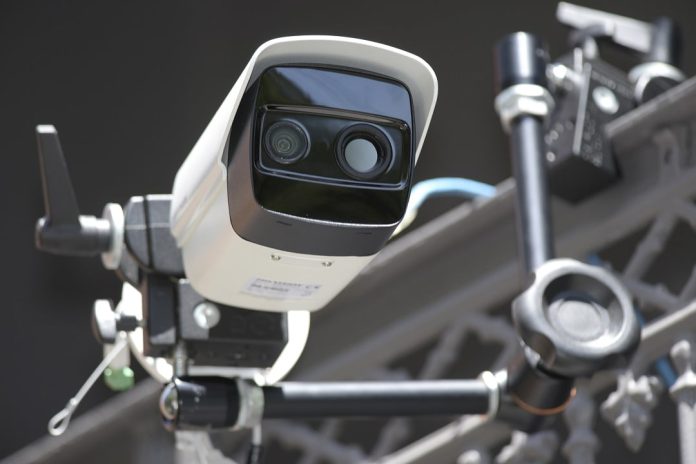HIKVISION’S DS-2TD2615-7/10 Bi-Spectrum bullet camera is an interesting combination – an IR-supported 1080p optical camera teamed up with a 160 x 120 pixel thermal camera in a robust IP66-rated bullet housing.
My settings are variable bitrate, highest quality, WDR on, P frame with I frame set to 50, standard H.264 compression, a maximum bitrate of 4096 and full frame. The optical and thermal cameras have fixed lenses – in the case of the optical camera, the focal length is 6mm, though 8 is available.
First impressions are positive – there’s a lot to like about Hikvision’s Bi-Spectrum bullet camera. Looking at the optical camera first, key areas like colour rendition, depth of field and the ability to handle variable light are all strengths. Performance against backlight is particularly noticeable as the afternoon goes on.

The fixed 6mm lens and 1080p resolution mean there’s some underlying pixel spread in my scene, but depth of field is strong. I can see details of pedestrians all the way down on Albion Street – the colour of clothing and hand bags, as well as vehicle types. Something else I notice is a 3-second stepping of the image – it’s quite consistent throughout the day. There’s also some background noise in the scene yet support for face recognition is comfortably out to 12 metres – this processing noise is characteristic of the camera engine.
The thermal component of the system has a 7mm fixed lens and combined with the 160 x 120-pixel resolution, you’re not getting huge detail on the thermal side. What you do get is the ability to see motion at night all the way out to the end of this scene – that’s about 100m. You also get the ability to detect events, including fire events. The thermal camera’s temperature detection is highly discerning and can be set to detect any temperature between -20 and 550C – that’s an excellent capability no matter what your application.

There’s something quirky going on here, too, because the 160 x 120 thermal and 1080p optical sensors are combined by the processing engine to deliver a 320 x 240-pixel image output for viewing on the thermal side. Even though resolution is quite low, I wouldn’t like to underrate the potential of this vanadium oxide/optical sensor combo as an investigative tool thanks to its capacity to deliver contrast. I can get a good sense of vehicle type and sometimes make, whether the vehicle is still hot from use. It’s also possible to make out considerable detail of pedestrians inside 12 metres. Facial hair, hats, glasses, clothing style, gait, the presence of bags, cigarettes, shoe types, gloves, etc. Even fundamental elements of facial structure can be readily discerned.
Is this sort of detail useful in a camera with IR support on the optical side? Well, yes, it is – especially at night when contrast between warm humans and the now colder background may increase contrast, though it has to be borne in mind that the cooler the background the hotter the human will appear – and I find later that there’s a point where all faces start to appear completely white with no few details.
Even on my test day when the ambient daytime temperature hits 31C, I’m still pleased with the performance of the thermal camera, which is picking up bits and pieces I might miss optically, especially in the background. For security managers squeezing every drop of data out of their security solution during an investigation, affordable low-resolution thermal is worth having.
Something else that’s neat about thermal is the way it delivers dependable data to analytics functions. Smart features like line crossing, intrusion, region entrance/exit, temperature exception and advanced fire detection really come into their own with thermal sensors.
Read the full review of Hikvision’s DS-2TD2615-7/10 Bi-Spectrum bullet camera here!
#sen.news












